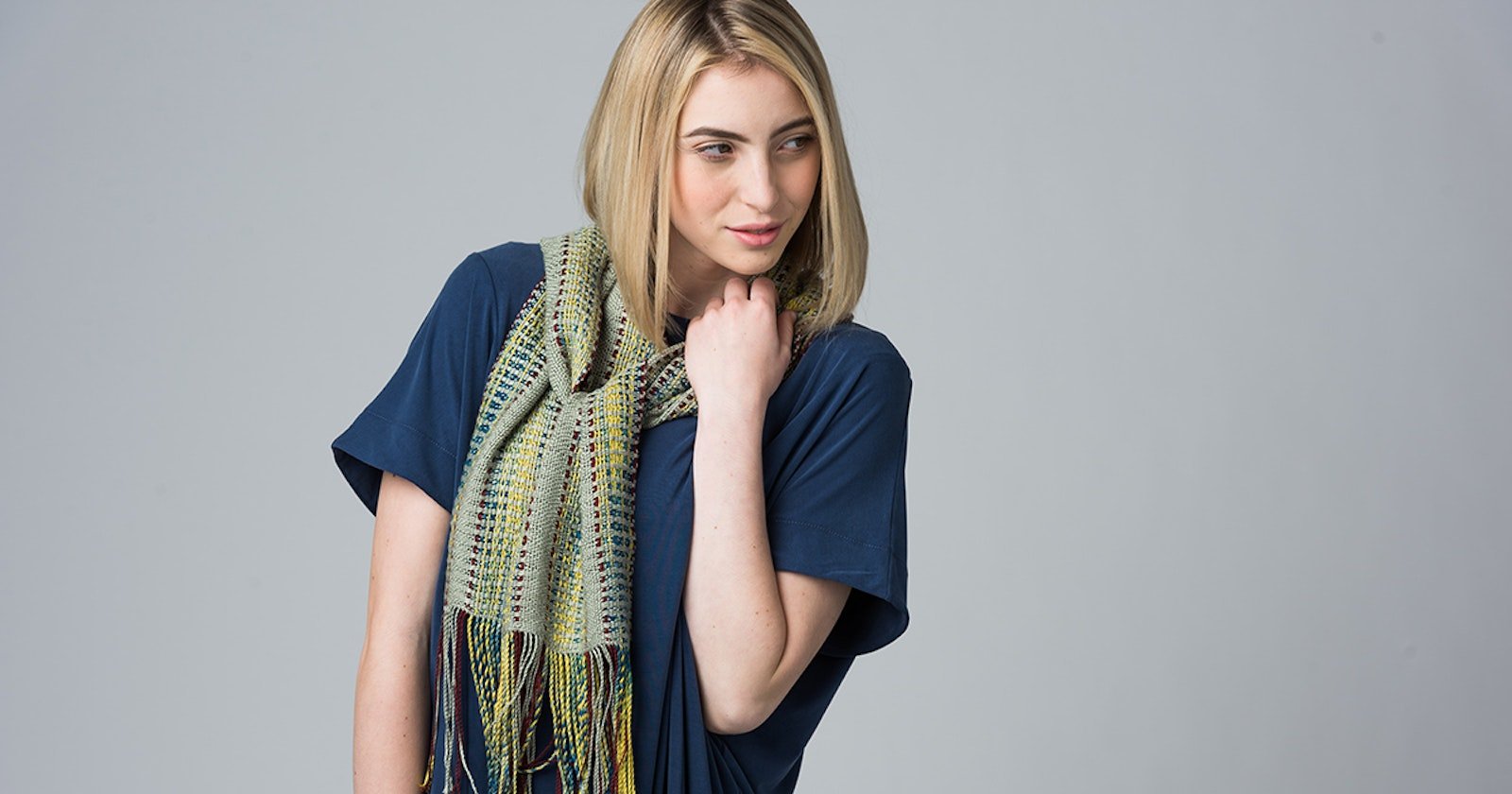I always say I love all types of weaving, but, actually, there is one type that I’m not crazy about: it’s what I call casual weaving. To me, casual weaving is what’s done with little, if any, attention to design or style. Just about anyone is capable of winding a warp and weaving a scarf on a rigid-heddle loom, but weaving a wonderful scarf takes thought, planning, and sometimes a fair amount of patience. This is why I love Loom Theory: Rigid-Heddle Scarf Collection. The collection is full of scarves that show great design, structure, and weaving—all done on a rigid-heddle loom, a relatively simple loom on which to learn to weave, but also one that can take you in all sorts of weaving directions.
Anu Bhatia’s Yarn to Love scarf shows a good use of a variety of yarn sizes with color-and-weave. Photo by Caleb Young, Good Folk Photography
Weaving a scarf that is in this rigid-heddle collection might just take you from weaving scarves that you like to scarves that you love. The designers each approached planning their scarves by matching a specific weaving technique to a special yarn, whether silk, wool, Tencel, acrylic, or chenille. The designers were also careful in their color choices, using muted palettes when the structure needed to be the focus and more vibrant palettes when color was driving the design.
Jenny Sennott’s Winter Jasmine scarf uses a combination of Tencel and chenille in its design. Photo by Caleb Young, Good Folk Photography
I would be happy to weave any of the seven scarves in the collection. They run the gamut: from Judith Shangold’s Sunset Shawl, which is a painterly example of hatching, and Elisabeth Hill’s Taconic Tonic, which is woven in deflected doubleweave (yes, ddw on the rigid-heddle!), to Amy Gunderson’s lacy Sparkle Nation scarf. I would gladly find a place for all three in my wardrobe. I would also be happy weaving and owning the other four scarves that use pick-up, color-and-weave, and inlay to great effect, creating designs that are calming yet intriguing.
You might not realize that deflected doubleweave can be done on a rigid-heddle loom. Photo by Caleb Young, Good Folk Photography
If you are interested in learning new techniques while weaving a beautiful scarf, I encourage you to check out Loom Theory: Rigid-Heddle Scarf Collection. It’s the antidote to casual weaving.
Weave well,
Susan




